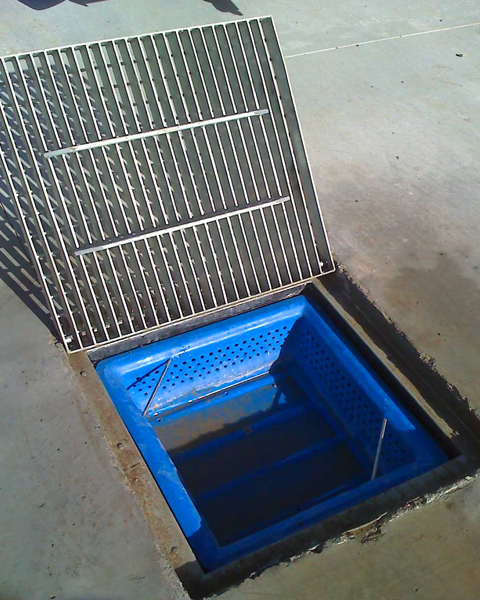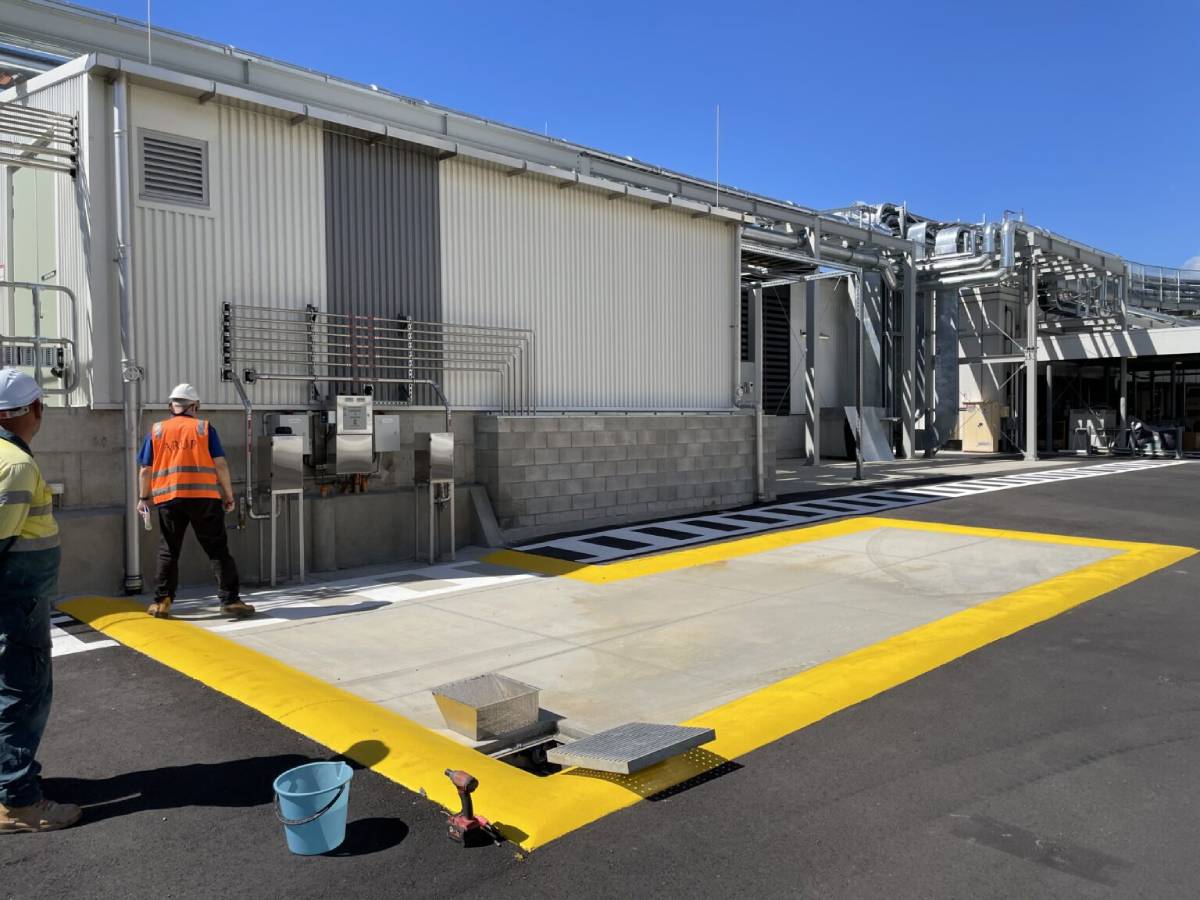Permanent wash bay design
🗝 Key points: Despite vehicle wash down being a routine activity in many operations, any mishandling of the wash-generated, pollutant-rich wastewater can have serious negative consequences for the environment. Luckily, there is a solution – in the form of well-designed and fully environmentally compliant wash bays. Read on to learn what permanent wash bays are, how they work, and how to find a permanent wash bay design perfect for your business.
In this article, you will learn a few basics about drive-over bunding. As the product’s name suggests, it was specifically designed to solve this challenge.
We all know that vehicles get dirty. That is especially true for heavy-duty working machines. In time, the grime and the sludge can impede the vehicle’s capabilities. That is why vehicle washing, or wash down, is one of the main pillars of vehicle maintenance.
However, although we usually associate “dirt” with soil, the grime that gets stuck on the vehicle’s surface contains many other elements. Fuel and fuel-burning products, oils, and traces of heavy metals are just some substances that will end up in the grime on the vehicle surface, and any mud and wet soil will act as perfect binders for them. Also, the washing process itself is the source of pollutants – mainly in the form of car wash detergents, degreasers, and polishes.
That is why the treatment of the vehicle wash wastewater is usually mandatory by law before discharging.
While collecting and treating vehicle wash wastewater may seem like a challenge; fortunately, there is a straightforward solution to the problem. A quality heavy equipment wash bay design and a reliable wash bay drainage design will come a long way in solving these problems.
What is in the wash down wastewater?
The wastewater generated even in the common carwash includes a myriad of substances, most of which are environmental pollutants. According to research, these include:
- Short-chain paraffins
- Substituted benzenes
- Phthalates
- Glycol ethers
- Bi- and polycyclic aromatic compounds (PAHs)
- Adipate
- Nonylphenol
These pollutants come from the petroleum-based degreasing formulations and washing agents, as well as from the traffic grime, dirt, and dust particles that eventually get washed off a vehicle. Also, car wash wastewater nearly always contains heavy metals such as Zinc and Lead.
Last but not least, vehicles and the washdown water can carry biological contaminants. That includes foreign and potentially invasive organisms or seeds and dangerous pathogens such as E. coli.
Things get even more complicated when it comes to industrial vehicles. Besides the fact that these machines burn a lot of fuel and use lubricating oils that will inevitably coat the vehicle’s surface, any industrial chemicals that a machine comes into contact with will also end up in the grime. That is especially true for industries such as mining, agriculture, and marine trade.
The Consequences
If discharged into sewers or streams untreated, wash down wastewater can contribute to the overall waterway pollutant load, endangering the health of local ecosystems, and in extreme cases, the quality of drinking water. That is why all vehicle wash wastewater is considered industrial wastewater by default.
As such, vehicle wash wastewater treatment and discharge is regulated by federal, state, and local regulatory agencies. Industrial wastewater can never be discharged or disposed of without a permit.
In Australia, the legislation requires all washdown water from the industrial applications to be isolated from the stormwater network and should never be freely discharged into the environment.

One of the easiest ways to prevent water washdown from directly entering the stormwater network untreated is by installing a permanent vehicle wash bay. More details about vehicle wash bays are discussed below.
Can we add more to this? I feel like it did not answer the question what are the consequences of wash down wastewater and how to fix it.
What are vehicle wash bays?
Vehicle wash bays are the first line of prevention of wash down-related, law-breaching environmental accidents. They are the primary means of keeping the vehicle wash down water contained and ready for further treatment or safe disposal.
However, not just any kind of wash bay will do – the Australian Quarantine and Inspection Services (AQIS) have a rigorous set of wash bay design and operation requirements.
We are proud to say that Trade Enviro wash bay designs are fully compliant with the strict regulations and standards.
What types of wash bays exist?
The wash bay design varies according to the specific needs of the end-user.
As a basic division, there are mobile wash bays and permanent wash bays, and both can be equipped with additional elements depending on how you plan to manage the wastewater.
Mobile Wash Bays
Mobile variants are self-contained wash bays, also known as car wash containers or water containment mats. Despite being relocatable and relatively light, the durable Trade Enviro’s Portable heavy equipment wash bay design can easily handle industrial-scale use.
Permanent Wash Bays
A permanent wash bay is a fixed, dedicated area that is a part of your workplace and is used specifically for the wash down of vehicles and equipment. Having a permanent wash bay makes perfect sense if your business activities are limited to a relatively small area and in cases when you don’t have to do on-site wash down.
Having a permanent wash bay makes installation and maintenance of water storage and treatment equipment and expands the range of water treatment options. The fact that you can isolate oil water separators, demand-driven diversion systems, and first flush systems from other work areas and operations reduces the risks of accidents and subsequent damage.
The main elements of a permanent wash bay design are:
- A dedicated area, large enough for machinery wash down
- An additional bunded perimeter capable of retaining all excess water runoff that results from wash down activities.
- A pump to transport the water runoff to either a holding tank or water treatment system.
Where can permanent wash bays be used?
Permanent wash bays can be used in all areas with a constant, long-term need for standardized and responsible vehicle wash down. That includes
- Permanent or long-term mining sites
- Industrial equipment keeping facilities
- Long-term, large-scale construction sites
- Export yards
- Auto repair shops
- Workshops
- Garages
- Car washes
- Container wash down operations
- AQIS facilities
As we mentioned AQIS again, it is worth noting that our permanent wash bays are fully compatible with the AQIS requirements discussed above.
A leader in permanent wash bay design
Trade Environmental Pty. Ltd. is an Australian environmental company with extensive experience and expertise in designing and supplying permanent wash bay systems in Australia. Our dedicated team is passionate about environmental compliance, assistance, and support, and is happy to offer both pre-designed and custom-designed wash bay options.
With our in-depth industry knowledge, we design, supply, and install wash bay systems perfectly fit for our customer’s business needs. Additionally, we are always there for our clients, providing free consultations at every step of the process – from the initial inquiry to after-sales support.
We can customise solutions specifically for your requirements and provide all the equipment you need to remain compliant with local water authorities.
Feel free to reach out to us today, and we’ll get back to you ASAP – because safety can’t wait.

